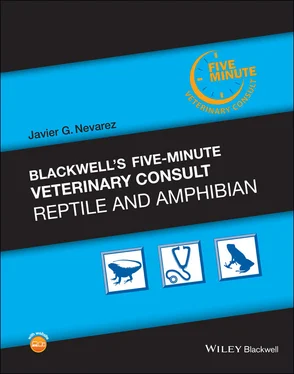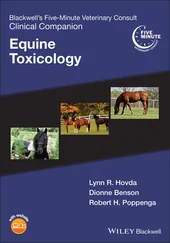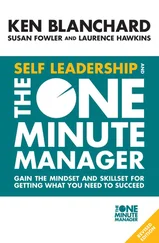Javier G. Nevarez - Blackwell's Five-Minute Veterinary Consult - Reptile and Amphibian
Здесь есть возможность читать онлайн «Javier G. Nevarez - Blackwell's Five-Minute Veterinary Consult - Reptile and Amphibian» — ознакомительный отрывок электронной книги совершенно бесплатно, а после прочтения отрывка купить полную версию. В некоторых случаях можно слушать аудио, скачать через торрент в формате fb2 и присутствует краткое содержание. Жанр: unrecognised, на английском языке. Описание произведения, (предисловие) а так же отзывы посетителей доступны на портале библиотеки ЛибКат.
- Название:Blackwell's Five-Minute Veterinary Consult: Reptile and Amphibian
- Автор:
- Жанр:
- Год:неизвестен
- ISBN:нет данных
- Рейтинг книги:4 / 5. Голосов: 1
-
Избранное:Добавить в избранное
- Отзывы:
-
Ваша оценка:
- 80
- 1
- 2
- 3
- 4
- 5
Blackwell's Five-Minute Veterinary Consult: Reptile and Amphibian: краткое содержание, описание и аннотация
Предлагаем к чтению аннотацию, описание, краткое содержание или предисловие (зависит от того, что написал сам автор книги «Blackwell's Five-Minute Veterinary Consult: Reptile and Amphibian»). Если вы не нашли необходимую информацию о книге — напишите в комментариях, мы постараемся отыскать её.
STAY UP TO DATE ON THE BEST PRACTICES FOR TREATING COMMON DISEASES IN REPTILES AND AMPHIBIANS Blackwell’s Five-Minute Veterinary Consult: Reptile and Amphibian
Blackwell’s Five-Minute Veterinary Consult: Reptile and Amphibian
Blackwell's Five-Minute Veterinary Consult: Reptile and Amphibian — читать онлайн ознакомительный отрывок
Ниже представлен текст книги, разбитый по страницам. Система сохранения места последней прочитанной страницы, позволяет с удобством читать онлайн бесплатно книгу «Blackwell's Five-Minute Veterinary Consult: Reptile and Amphibian», без необходимости каждый раз заново искать на чём Вы остановились. Поставьте закладку, и сможете в любой момент перейти на страницу, на которой закончили чтение.
Интервал:
Закладка:
CALCIUM SUPPLEMENTATION
All animals need a source of calcium and a calcium to phosphorus ratio of 1.5 : 2. Carnivorous animals eating adult whole prey items have the advantage of obtaining calcium form the prey’s bones. However herbivorous and omnivorous reptiles often lack an appropriate source of calcium. Young carnivores being fed immature prey items or carnivores not being offered whole prey items should also be supplemented with calcium. Most plant materials and invertebrates have a negative calcium to phosphorus ratio, so animals must find other sources of calcium. In their natural environment, these animals will travel to clay and mineral deposits or select particular feedstuffs to supplement their calcium intake. In captivity, reptiles do not have the opportunity to seek calcium sources but rather rely on it being supplemented in their diet. All herbivorous, omnivorous, and insectivorous reptiles require calcium supplementation.
Various commercial sources of calcium are available, but some are better than others. First off, it is recommended that calcium supplements be purely calcium with no phosphorus or vitamin D3. While many see a benefit of adding a D3 supplement, there are serious and real concerns about over supplementation of vitamin D3. Adding a calcium supplement that also contains phosphorus does not make sense because the reptiles are already in a negative calcium to phosphorus imbalance. Adding more phosphorus would not help solve this imbalance in an effective manner. The author prefers calcium only supplements including calcium powders sold for reptiles, cuttle bones, and crushed oyster shells. Another alternative is the use of fruit‐flavored calcium carbonate antacid tablets. These tables are more palatable than other products. They can be pulverized or fed in small pieces.
Regardless of the type of supplement, calcium is best offered daily to account for variations in intake. The supplement is mixed with the vegetables or by coating prey items. However, it must be noted that when insects are coated with a powdered supplement, the powder will fall off within 10–20 minutes. Insects should therefore be dusted immediately before feeding. There are some products that advertise calcium in a spray or gel cubes. These have not been proven to be effective and should be avoided until research to support their effectiveness is available. There are also some multivitamin products advertised for reptiles, and many of these include calcium as well as D3. Given that we do not know the nutritional requirement of most reptile species, the use of multivitamins is questionable. While it may be beneficial in some species it could be detrimental in others that may be over supplemented by certain minerals or vitamins. Finally, earthworms and hornworms (Manduca sp.) are two excellent sources of nutrition for carnivores and invertebrates because they tend to have a positive calcium to phosphorus ratio. However, this ratio can also vary with the conditions in which they are reared and maintained.
SUMMARY
All this information can be overwhelming to veterinarians and clients alike. It is important to understand the basics of UVB requirements and the factors that affect UVB supplementation. All six factors must be considered when selecting a bulb, as there is no single best bulb for every situation. There are new studies and product available every year, so it is also important to stay current on the literature and technological advances in order to provide better recommendations to clients. Proper calcium supplementation together with UVB light exposure is critical to prevent secondary nutritional hyperparathyroidism. The absence of either or both of these elements from the history of a reptile’s case should prompt veterinarians to include nutritional secondary hyperparathyroidism as a differential diagnosis.
GENERAL RECOMMENDATIONS FOR UVB LIGHTING IN REPTILE ENCLOSURES
For open‐topped enclosures or when there is no material between the bulb and the animal:
1 Use a T8 5–12% bulb at distances up to 15 inches between the bulb and the animal; for distances over 15 inches, a T8 12–14% or T5 10% bulb may be required.
2 Provide a UVB and heat gradient with the UVB bulb covering one‐third to three‐quarters of the cage length/depth.
3 Turn UVB light on for 10–12–hours daily.
For enclosures with a screen/mesh between the bulb and the animal:
1 Use a T8 10–12% bulb at distances up to 15 inches between the bulb and the animal; for distances over 15 inches, a T8 12–14% or T5 10% bulb may be required.
2 Provide a UVB and heat gradient with the UVB bulb covering one‐third to three‐quarters of the cage length/depth.
3 Turn UVB light on for 10–12 hours daily.
Note: Depending on the type of mesh, there may be a 30–50% reduction in UVB, which must be taken into consideration when selecting the bulb. The use of a UVB radiometer is more critical when the bulb is placed above a mesh to determine the actual UVB exposure.
Suggested Reading
1 Acierno MJ, Mitchell MA, Zachariah TT, et al. Effects of ultraviolet radiation on plasma 25‐hydroxyvitamin D3 concentrations in corn snakes (Elaphe guttata). Am J Vet Res 2008; 69(2):294–297.
2 Burger RM, Gehrmann WH, Ferguson GW. Evaluation of UVB reduction by materials commonly used in reptile husbandry. Zoo Biol. 2007; 26:417–423.
Anatomy and Physiology of Amphibians
Amphibians are a group of vertebrates with significant conservation challenges. They have a worldwide distribution, but most species occur in tropical climates. There are over 8,000 amphibian species distributed among three orders: Anura, Cuadata, and Gymnophiona.
The order Anura includes frogs and toads and comprises the majority of amphibians with over 7,100 known species. In general terms, frogs live in or near water while toads are more terrestrial. As such, frogs have thinner more permeable skin while toads have thicker skin to protect against dehydration. The vast majority of anurans are oviparous but a few ovoviviparous to viviparous species exist.
The order Caudata includes salamanders and newts, with over 700 species. Salamanders are primarily terrestrial while newts are aquatic to semiaquatic. Sirens and amphiumas are primarily aquatic. Amphibians in this order are mostly oviparous and are capable of neoteny, which is the retention of juvenile characteristics in fully mature animal. As such, neotenic amphibians can reproduce despite the retention of juvenile features like gills. There are three types of neoteny described—obligate, inducible, and facultative. Obligate neotenic species are not able to metamorphose either in nature or through experimental stimulation. The families Amphiumidae (amphiumas), Sirenidae (sirens), Proteidae (mudpuppies, waterdogs, European blind cave salamander), and Cryptobranchidae (giant salamanders) are all known to express obligate neoteny. Inducible obligate neotenic species do not metamorphose in nature but can be induced to metamorphose through the administration of thyroxine or thyroid‐stimulating hormone. Perhaps the best‐known neotenic species, the axolotl ( Ambystoma mexicanum ) is an inducible obligate neotenic species, although many specimens are reported to have a shorter lifespan after metamorphosis. Some members of the family Plethodontidae (lungless salamanders) are also inducible obligate neotenic species. Metamorphosis in the facultative neotenic species occurs according to environmental conditions, most commonly associated with the lack of development of the thyroid gland. Facultative neotenic species can be found in the families Ambystomatidae, Salamandridae (true salamanders, newts), and Hynobiidae (Asiatic salamanders). The tiger salamander ( Ambystoma tigrinum ) is the best‐known facultative neotenic species.
Читать дальшеИнтервал:
Закладка:
Похожие книги на «Blackwell's Five-Minute Veterinary Consult: Reptile and Amphibian»
Представляем Вашему вниманию похожие книги на «Blackwell's Five-Minute Veterinary Consult: Reptile and Amphibian» списком для выбора. Мы отобрали схожую по названию и смыслу литературу в надежде предоставить читателям больше вариантов отыскать новые, интересные, ещё непрочитанные произведения.
Обсуждение, отзывы о книге «Blackwell's Five-Minute Veterinary Consult: Reptile and Amphibian» и просто собственные мнения читателей. Оставьте ваши комментарии, напишите, что Вы думаете о произведении, его смысле или главных героях. Укажите что конкретно понравилось, а что нет, и почему Вы так считаете.












